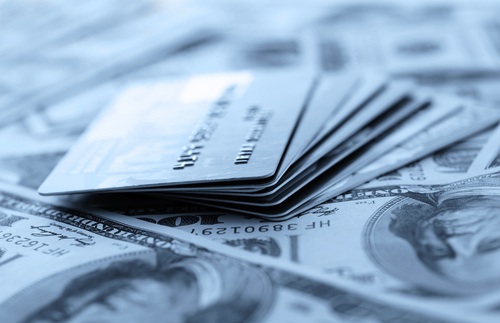
Spending on credit cards is back in vogue. And this time, issuers are reaping the benefits of better loan quality.
A look at some of the nation’s top issuers shows improvements in not just card sales volume, but also in the size of average receivables and in the reductions in charge-off rates.
Helping drive the momentum in credit card use is growth in how much consumers have to spend. In June, for example, U.S. personal income increased $56.7 billion, or 0.4 percent, while disposable income increased $51.5 billion, also by 0.4 percent, according to the Bureau of Economic Analysis. Similar increases have been going on for months.
And for some issuers, the return of year-over-year growth is coming sooner than expected.
Take Capital One Financial Corp.. Chairman and CEO Richard Fairbank had expected the return to occur later on in the year, but it surprisingly returned in the second quarter.
“The early return to year-over-year loan growth resulted from increasing traction in the segments we’re emphasizing including rewards customers and revolvers other than high-balance revolvers as well as the success of credit line increase programs,” Fairbank told analysts during the company’s recent second quarter earnings call. “The collective impact of these factors was greater than the continuing impact of our choice to avoid high-balance revolvers.”
Fairbank isn’t alone in being surprised by some of the improvement in credit card performance. During his own recent quarterly earnings call, John Gerspach, Citigroup chief financial officer, commented on some loss improvements for the issuer, which recently celebrated its fifth consecutive year-over-year boost in full-rate card balances.
“Credit remained favorable in the second quarter, with net credit losses and delinquencies both improving more than what we had anticipated in branded cards and retail services, contributing to a loan loss reserve release of nearly $400 million,” he said.
The reserve release in cards resulted from the fact that the credit performance in cards just got a lot better than what we had been anticipating at the end of the first quarter,” Gerspach said. “At the end of the first quarter, we were talking about overall North America [net credit loss] rates sort of leveling off at 3% for the year, and we just continued to see much more favorable delinquency experience, as well as NCL experience in both branded cards and retail services,” he said, noting he doesn’t expect similar reserve releases to continue the rest of the year, at least not on the same level.
A look at the second-quarter performance of some of the nation’s top issuers illustrates how card programs are seeing improvement almost across the board.
JPMorgan Chase, for example, saw its card sales volume jump 12 percent during the quarter, even as its card charge-off rate fell by 43 basis points (see chart). Similarly, Capital One Financial Corp. saw its U.S. card sales volume rise by more than 11 percent, even as its charge-off rate plummeted 76 points.
Such issuers are reaping the benefits of portfolios they cleaned out during the Great Recession and improving U.S. economy that has more consumers able (and willing) to spend on credit. How long the trend last will depend on how freely issuers open their lines of credit and how well the economy continues to perform.
As issuers put more of their extra card revenue into marketing initiatives, charge-offs likely will rise as the quality of cardholders spreads thinner. That said, interchange and interest revenue will grow simultaneously as spending cardholder spending increases.
For now, the pendulum is on the upswing.
During Chase’s quarterly call with analysts, Marianne Lake, the bank’s chief financial officer, commented on how Chase’s large market share gives it a fairly good picture of what is happening in the consumer card-use trends.
“And what I can tell you is if you decompose our growth, you have still strong high single-digit growth in nondiscretionary spend categories driven principally in the grocery and oil space, which is not all that unsurprising but I think is actually instructive about consumer spending and inflation,” she said. “And then if you look at the discretionary growth, which is growing even more strongly in the double-digit territory, it is across the board. It is travel, it is restaurants, it is retail – it is across the board, so consumers are spending very strongly in both categories.”
At Bank of America, retail volumes on debit and credit cards were up 4% from last year’s second quarter, but more importantly they rose by 8% from the first quarter this year, “showing increased momentum in spending among our card customers,” Brian Moynihan, BofA’s CEO, said during a recent quarterly analysts call. “The good news is the card business is starting to grow in terms of balances.”
In fact, the second quarter represented the first linked quarter in which BofA had experienced growth in period-ending U.S. card balances for some time, rising by some $1.3 billion.
“Our credit quality remains strong, as net charge-offs declined versus both periods,” Moynihan said on the call. “Our U.S. credit card business exited the quarter with less than a 3% loss rate in June.”
And such improved performance is reflected in the growth in some issuers’ average loans, which have started inching up. Chase’s Q2 average balance, for example, jumped by 1 percent, to $123.7 billion.
Issuers’ recent market improvements are a sign of an improving economy. But how long the market maintains the momentum given the growing global political and economic strains is difficult to predict. But at least for now, issuers should bask in the long-awaited improvements in their portfolios.